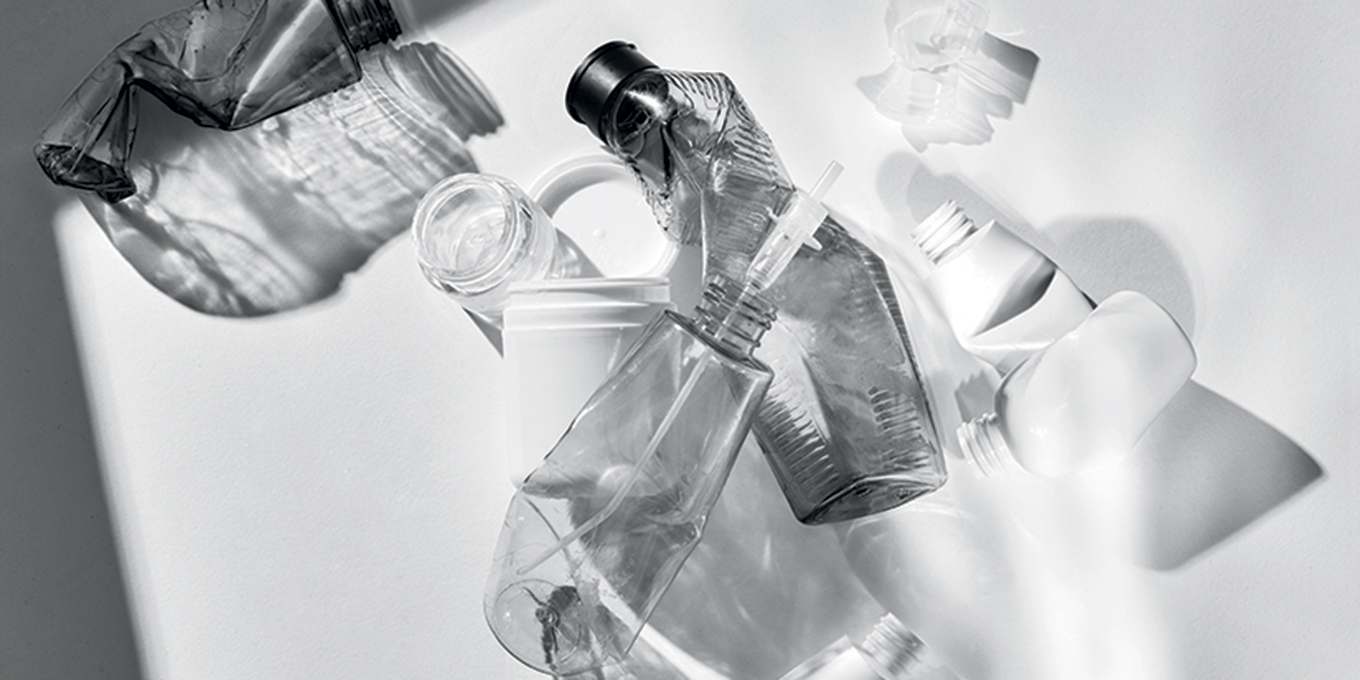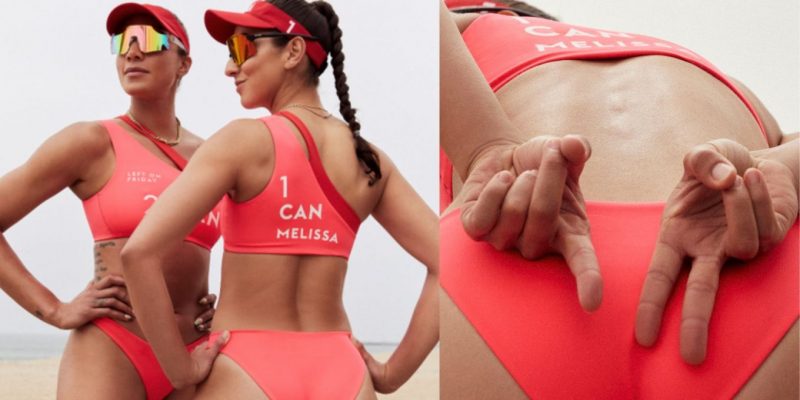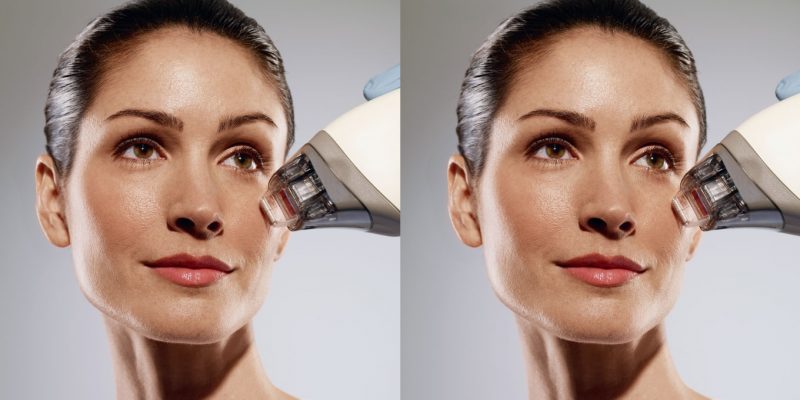Skincare
How Do We Solve The Beauty Industry's Plastic Problem?
An estimated 120 billion units of packaging are produced every year by the global cosmetics industry, most of which are not recyclable.
by : Sarah Daniel- May 18th, 2019

We partnered with Hidden Beauty podcast to tell the story behind how a popular deodorant in the 1950s marked the beginning of the cosmetic industry’s affinity for plastic packaging, and what some of today’s biggest beauty brands are doing to reduce plastic waste.
In 1947, Dr. Jules Montenier, an American cosmetic chemist, created Stopette, a liquid deodorant in a squeeze bottle made of polyethylene, the same plastic used today to make grocery bags and children’s toys. Stopette was a wild success, its popularity bolstered by the airtime it received as the sponsor for What’s My Line?, the CBS game show that featured celebrity guests like Lucille Ball and Fred Astaire.
Before long, Montenier’s delivery system became the preferred packaging for other beauty products, from shampoo and conditioner to shaving cream and suntan lotion, replacing glass and ceramic containers as the vessel of choice for the cosmetics industry. Although fans originally touted the plastic squeeze bottle for its durability, by the mid-1950s they were celebrating its disposability, writes Jeffrey Meikle in American Plastic: A Cultural History. “In the words of one commentator, plastic’s future was ‘in the garbage can.’”
That future is now. An estimated 120 billion units of packaging are produced every year by the global cosmetics industry, most of which are not recyclable. Scientists suggest that by 2050, about 12,000 metric tons of plastic waste will be in landfills or the natural environment. As a result, many of us are taking a closer look at what’s inside our makeup bags and Marie Kondo-ing our beauty routines. In fact, market-intelligence agency Mintel has declared “sub-zero waste” one of the biggest trends for 2019 in cosmetics and personal care, as consumers look for ways to reduce waste in all aspects of their lives.
These headlines are also changing how we define green beauty: Until now, the category has mainly focused on organic formulas and clean-ingredient lists free of sulphates, silicones and phthalates, but the conversation is shifting to the way in which these products are produced and packaged and what impacts they’re having on the environment around us, from reef-safe sunscreen to reducing our carbon footprints.
Not surprisingly, many green-beauty brands already innovate with strong ethics and environmentally friendly practices in mind. “If you source a plant-based ingredient, it’s [likely] to have a more sustainable footprint than a petrochemical ingredient,” says Mia Davis, director of mission at Credo Beauty, a green-beauty retailer that carefully vets the life cycle of its products, from formulation to shelf. “Sustainability initiatives and clean initiatives have a ton of overlap.”
Take brands like Vapour Organic Beauty, which formulates its products without water and manufactures them in a facility designed to harness solar energy via skylights. Or Juice Beauty, which uses locally grown grapes that would otherwise become food waste because they aren’t attractive enough to be sold in grocery stores. And Kjaer Weis’ luxe silver-metal compacts can be refilled with any of the line’s organic makeup.
This growing awareness that our beauty rituals can have far-reaching effects on mother nature isn’t just limited to the green and indie categories. Brands big and small, prestige and drugstore, have been listening and finding different ways to reduce waste. When Dior relaunched its Hydra line last year, it removed excess packaging, like the leaflet, corrugated card and Cellophane wrapping, while Avon is nearing its goal of sending zero waste to landfills.
Other brands have partnered with global waste-management company TerraCycle. For instance, Herbal Essences is working with them to clean up beaches by giving the plastics washing up on shores a second life as 100-percent-recyclable shampoo and conditioner bottles (coming to Canada for a limited time this July), while Eos recently created a program where consumers can mail in their empty lip-balm pots so they can be recycled into park benches and bike racks.
Garnier also works with TerraCycle with the goal of switching to completely recyclable packaging by 2020. One big obstacle? Supply and demand. Consumers need to recycle more. “The more [consumers] recycle, the more plastic we have to reproduce new bottles with,” says global brand president Delphine Viguier-Hovasse.
While established brands are making changes to meet consumer demands, brands like vegan body- and-hair-care line Love Beauty and Planet hit shelves with the eco-friendly box already checked off. Its conditioners, for example, feature fast-rinse technology, which means it disperses faster, cutting down shower time. (The brand is also launching solid shampoo bars later this year.) It has even addressed little details like the label adhesive it uses on its recyclable bottles.
“Fifteen per- cent of the labels on bottles don’t get removed,” says Molly Landman, Love Beauty and Planet’s global brand director. If the labels stay put, those items are diverted to a landfill, she says, “so we worked with a partner that ensured that the label comes off all the time so that every bottle can be recycled.”
While recycling initiatives are positive, they aren’t long-term solutions, says Vito Buonsante, plastics program manager at Environmental Defence. “On the one hand, they don’t prevent the creation of new waste. On the other hand, they create a continuous need for new waste.” Buonsante says the ideal scenario would be to transition to a model in which companies are responsible for collecting the waste their products cause and creating less waste altogether, such as making products reusable or refillable.
This shift is already happening at the retail level. Earlier this year, Lush, a pioneer in the packaging-free movement, doubled down on its zero-waste goals, opening a third entirely-package-free store (called the Naked Shop) in the United Kingdom, after launching them in Milan and Berlin. Though there aren’t immediate plans to open a similar outpost in Canada, the concept is resonating here at home with Vancouver’s refill shop, The Soap Dispensary & Kitchen Staples, and new players like Toronto’s Bare Market, which sells everything from nail-polish remover to shampoo in bulk.
But the biggest news is Loop, a new waste-free shopping program developed by a coalition of companies in the cosmetics industry— including Procter & Gamble and Unilever—that is being piloted in New York and Paris. Much like the days when milk was delivered in bottles to people’s doorsteps, when you order deodorant, toothpaste or shampoo, you’ll pay a deposit for the bottle, and when it’s finished it will be picked up by Loop, cleaned and then refilled for a new customer. Each stainless-steel package in the system is designed for 100 or more uses.
“Creating consumer change is phenomenally difficult,” Tom Szaky, CEO and co-founder of TerraCycle, a partner in the program, told Fast Company. “So the first question we asked in developing the model was ‘Why did disposability win? Why did it take over?’ I think it’s because disposability is convenient and affordable.”
Celebrated for its disposability, Montenier’s squeeze bottle may have ushered in the era of plastic packaging for beauty products, but the arrival of Loop may just mean that we will finally be able to say goodbye to plastics altogether.
This article originally appeared in the April 2019 issue of ELLE Canada.
Newsletter
Join our mailing list for the latest and biggest in fashion trends, beauty, culture and celebrity.
Read Next

Fashion
This Canadian Swimwear Brand Designed Canada’s 2024 Women’s Olympic Beach Volleyball Team Uniforms
And they're *so* good.
by : Allie Turner- Apr 24th, 2024
Fashion
The Most Iconic Looks In Met Gala History, From 1973 To Now
40 years of the night that's all about trailblazing fashion.
by : ELLE Australia- Apr 24th, 2024

Culture
ELLE Escapes: Savannah
Where to go, stay, eat and drink in “the Hostess City of the South.”
by : ELLE- Apr 15th, 2024




